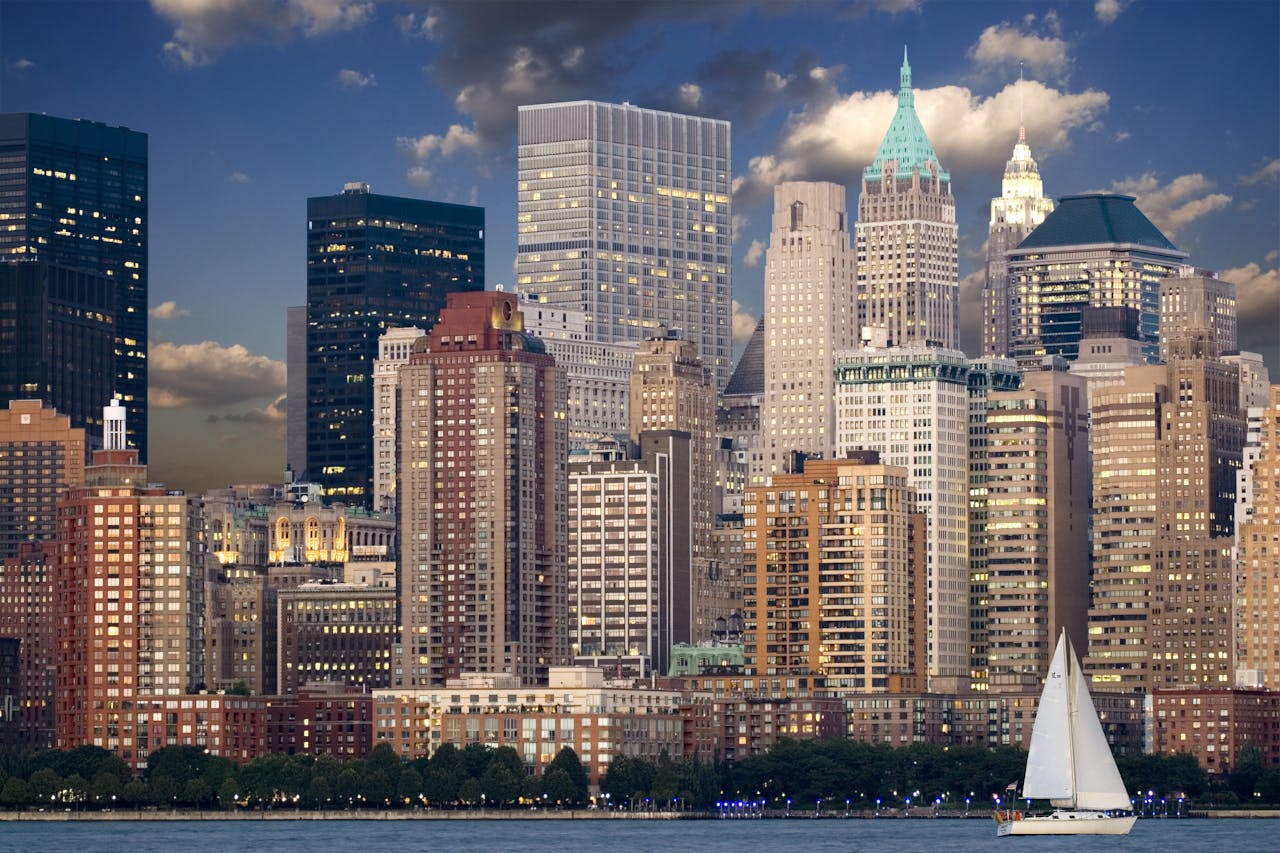Hot Job Sectors in New York city: From Wall Street to Silicon Alley
Published

New York City has always been a place where careers are made, broken, and remade. For generations, ambitious professionals from around the world have arrived in the city with a mix of determination and dreams, hoping to find their place in the industries that define America’s economic and cultural life. For some, that meant the high-stakes trading floors of Wall Street, where fortunes could rise or fall in a single afternoon. For others, it meant the studios of Madison Avenue, the bustling hospitals of Manhattan, or the bright lights of Broadway. Today, however, the map of opportunity in New York is changing, and the city’s job market is a reflection of both its rich history and its restless push toward the future.
Wall Street, long considered the beating heart of New York’s economy, remains a dominant force. The financial services sector continues to attract global talent, driven by innovation in fintech, asset management, and digital currencies. Yet the story of New York’s job market is no longer written solely by bankers in Midtown towers. Over the past decade, a new hub has taken root: Silicon Alley, the city’s thriving tech ecosystem that stretches from Lower Manhattan into Brooklyn and Queens. Once overshadowed by Silicon Valley, New York’s technology sector has matured into a powerhouse of its own, fueled by startups, venture capital, and a growing demand for skilled talent across artificial intelligence, cybersecurity, biotech, and clean energy.
This duality—finance on one side, technology on the other—is defining the city’s workforce. But the landscape is even more nuanced. Healthcare, creative industries, and green jobs are surging as well, reflecting the city’s diversity and resilience. Each of these sectors tells a different story about where New York is heading and what skills, mindsets, and opportunities are shaping its economy. For job seekers, professionals, and employers alike, understanding these trends is no longer optional—it’s the difference between staying ahead of the curve and falling behind.
In this article, we’ll dive into the hottest job sectors in New York City right now, tracing their roots, examining their growth, and exploring what they mean for the future of work in the city that never sleeps. From the enduring dominance of Wall Street to the disruptive rise of Silicon Alley, and from the stability of healthcare to the explosive potential of green innovation, this is the story of how New Yorkers are working, thriving, and redefining ambition.
Wall Street Still Reigns Supreme
No conversation about jobs in New York can begin without acknowledging the continued dominance of Wall Street. The financial services industry remains the backbone of the city’s economy, contributing billions in tax revenue and employing hundreds of thousands of professionals. Wall Street has weathered both regulatory pressures and waves of technological disruption. The trading floors are quieter than they once were, as much of the action now happens algorithmically, but the industry has not diminished—it has evolved.
Investment banking continues to attract ambitious graduates from Ivy League schools, but the skills required are shifting. Financial modeling and deal-making remain core, yet expertise in digital currencies, blockchain infrastructure, and data-driven risk assessment is now indispensable. Fintech firms, often headquartered just a few blocks away from legacy banks, blur the lines between Wall Street and Silicon Alley, offering roles that combine finance with technology.
Job seekers in this sector face both intense competition and immense rewards. Compensation packages remain among the highest in the country, and the prestige of working for a top-tier bank or hedge fund still carries global weight. Yet the culture is also changing. Younger professionals are demanding work-life balance, flexibility, and purpose-driven careers. Wall Street firms are responding by integrating hybrid work models, mental health programs, and diversity initiatives, seeking to retain talent in an era where Silicon Alley offers enticing alternatives.
Silicon Alley Comes of Age
If Wall Street is New York’s enduring anchor, Silicon Alley is its rising tide. Once considered a scrappy alternative to Silicon Valley, New York’s tech ecosystem has now come into its own. In 2025, the sector employs hundreds of thousands and spans industries as diverse as artificial intelligence, biotech, media tech, and climate technology.
AI has become the most transformative force. Startups across Manhattan and Brooklyn are developing agents, platforms, and applications that touch every aspect of business, from logistics to legal research. Cybersecurity firms thrive in a world where digital threats grow more sophisticated every year, and New York’s position as a global financial hub makes it a natural leader in protecting sensitive data. Biotech, too, is flourishing, with companies clustered around research institutions, blending medicine with cutting-edge technology to tackle everything from personalized healthcare to pandemic prevention.
Unlike the stereotypical West Coast startup scene, New York’s tech sector is deeply integrated into the city’s broader economy. Media companies partner with tech firms to reinvent digital storytelling. Banks rely on AI startups to optimize trading and compliance. Real estate developers use proptech platforms to reimagine how buildings are managed and lived in. This cross-pollination creates a unique environment where technology is not an isolated industry but a connective tissue linking the city’s traditional powerhouses.
For job seekers, Silicon Alley offers a different culture than Wall Street. While salaries may not always match the peaks of finance, equity stakes, creative work environments, and the allure of building something new are strong draws. The sector also prides itself on inclusivity and flexibility, attracting a diverse workforce and offering remote or hybrid options that align with post-pandemic expectations.
Healthcare — The Lifeblood of the City
Beyond finance and technology, healthcare is one of the most critical and stable job sectors in New York City. In 2025, it is not just hospitals that are hiring but a vast ecosystem of clinics, biotech labs, telemedicine platforms, and community health organizations. The city’s aging population, coupled with ongoing public health challenges, ensures a steady demand for doctors, nurses, therapists, and researchers.
New York’s healthcare sector has also become a hub for innovation. Telehealth, once considered a stopgap solution during the pandemic years, is now fully integrated into care delivery. Patients across the five boroughs can access specialists remotely, and AI-powered diagnostics support doctors in making faster, more accurate decisions. Biotech firms work hand-in-hand with hospitals, transforming New York into a center of medical research and experimentation.
Healthcare jobs carry a unique sense of purpose, and in a city as diverse as New York, cultural competency and multilingual skills are increasingly valued. For immigrants and first-generation professionals, healthcare often represents a path to stable, rewarding careers. Unlike some sectors that fluctuate with economic cycles, healthcare offers resilience, making it one of the most attractive long-term career options in the city.
Creative Industries in a Digital Age
New York’s creative industries remain a defining feature of its identity. From Broadway stages to film studios in Queens and Brooklyn, from advertising agencies on Madison Avenue to digital content creators across the boroughs, creativity continues to drive both culture and commerce. In 2025, these industries have adapted to the digital age while maintaining their uniquely New York flair.
Streaming platforms and social media have transformed how content is produced and consumed, yet New York retains its edge as a creative capital because of its talent density and cultural diversity. Advertising agencies now blend storytelling with data analytics, requiring professionals who are as comfortable interpreting metrics as they are pitching ideas. Fashion houses leverage AI to predict trends and optimize supply chains, while independent designers use digital platforms to reach global audiences.
The creative economy thrives because it evolves. It embraces new technologies without abandoning the traditions that give New York its cultural authority. For job seekers, the creative industries offer opportunities that balance artistic fulfillment with commercial impact. While salaries may not match those in finance or tech, the appeal of shaping culture and influencing public discourse ensures a steady stream of passionate professionals.
Green Jobs and the Sustainability Revolution
Perhaps the most exciting growth story in 2025 is the rise of green jobs. New York has committed to ambitious climate goals, and that commitment is reshaping its labor market. Renewable energy projects, from offshore wind farms to solar installations, are creating thousands of jobs. The construction industry is pivoting toward sustainable building practices, retrofitting old structures and designing energy-efficient skyscrapers.
The city’s commitment to sustainability extends beyond energy. Green finance, a niche within Wall Street, is expanding rapidly as investors seek to back environmentally responsible projects. Startups in Silicon Alley are building climate-tech solutions, from carbon capture platforms to AI-driven energy management systems. These efforts create a ripple effect, generating employment opportunities in research, engineering, urban planning, and policy advocacy.
For younger professionals, green jobs carry an added appeal: the chance to align career ambitions with personal values. The urgency of climate change has made sustainability not just a sector but a movement, and New York, with its density, resources, and global profile, is at the forefront.
The Mosaic of Work in New York
What makes New York’s job market so compelling in 2025 is not the dominance of any single sector but the interplay among them. Finance and technology are increasingly inseparable, as fintech bridges Wall Street and Silicon Alley. Healthcare and biotech overlap, creating opportunities at the cutting edge of science. Creative industries and technology collaborate, reimagining storytelling for a digital age. Green innovation runs through all of these sectors, shaping how businesses operate and how professionals think about their work.
This interconnectedness reflects the essence of New York itself—a city where cultures, industries, and ideas collide and combine. The job market here is not static; it is a living organism, constantly adapting to global trends while maintaining its unique character.
Conclusion
In 2025, the hottest job sectors in New York City tell a story of both continuity and change. Wall Street continues to reign, yet its dominance is now shared with a thriving Silicon Alley that is redefining what it means to innovate in the city. Healthcare remains the steady lifeblood, offering resilience and purpose. Creative industries adapt and endure, shaping global culture from a uniquely New York perspective. And green jobs rise as the sector of the future, fueled by necessity and ambition alike.
For job seekers, professionals, and businesses, the lesson is clear: New York is not one economy but many, woven together in a complex, resilient fabric. The opportunities are vast, but so are the challenges, and success depends on adaptability, curiosity, and the willingness to navigate a city that never stops reinventing itself. From Wall Street’s skyscrapers to Silicon Alley’s startups, from hospitals to Broadway stages, from wind farms to fashion houses, New York’s job market in 2025 remains as vibrant, demanding, and inspiring as the city itself.








